Where did Ed Love work? A better question might be: Where didn’t he work?
A partial list of studios would include Disney, Iwerks, Lantz, MGM, Hanna-Barbera, Bob Clampett Productions, and DePatie-Freleng. He was fast and good so his services were always in demand. Here’s a small sampling of his commercial work…
Gro Pup
Snuffles the biscuit loving dog stars in this mini medical epic. Hal Smith and Daws Butler provide the vocals. From Hanna-Barbera.
Tony’s Band
Also from H&B. Art Gilmore narrates and Thurl Ravenscroft is Tony the Tiger again.
Bactine
Stick figures love this famous spray antiseptic in a bottle!
Gallo Wine
You can say “Hello” to Gallo, but Gallo won’t answer back because Gallo cannot speak, despite what you’ve heard about wine doing the talking…
Mr. Wiggle
Produced by DePatie-Freleng and animated by Ed Love. This spot caused me some confusion as a youngster because the villain’s name was “Sweet Tooth Sam” and that also happened to be the name of a villain in the Tom Terrific cartoons. There was no connection other than the name. Voices by Paul Frees and Daws Butler.

Coca Cola – Mountain Flower
Produced by Walter Lantz in 1949, this was one of the last things made before the Lantz studio had its temporary shut down. Animated by Ed Love and Don Towsley (Ed animated the beginning and end, and Don did the middle part.) Directed by Dick Lundy.
Penn Mutual – Excerpts
Paul Fennell produced this sales film for the Penn Mutual life insurance company in 1947. It’s mostly camera moves and graphics. It’s nearly eighteen minutes long, and it’s dead boring. Rather than try to convince you folks to watch the entire film, I’ve compiled the actual bits of character animation into this video which is just over two minutes. Even the character animation is just a man lecturing you, a serious misuse of animation. Still, Ed did a nice job. He always does a nice job.


 Mike Kazaleh is a cartoonist and animator whose work can be seen in comic books like Bongo’s The Simpsons, Futurama and Papercutz’ Gumby – and on screen in Warner Bros. Tiny Toon Adventures, Ralph Bakshi’s Mighty Mouse: The New Adventures and Cool World.
Mike Kazaleh is a cartoonist and animator whose work can be seen in comic books like Bongo’s The Simpsons, Futurama and Papercutz’ Gumby – and on screen in Warner Bros. Tiny Toon Adventures, Ralph Bakshi’s Mighty Mouse: The New Adventures and Cool World.


































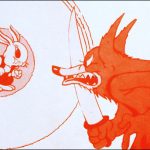
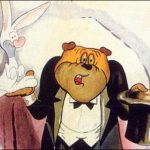
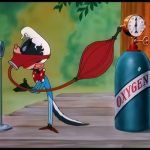
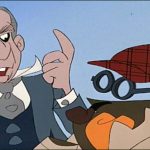
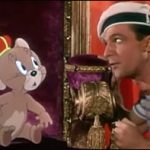

















Very fine post, Mike, and a much-needed tribute to one of my favorite animators. Ed should be a Disney or Tex Avery legend! He worked at every studio. I like the animation he did on “Mountain Flower” about the best of all of these clips. His animation of Woody Woodpecker in “Woody the Giant Killer” and “Wet Blanket Policy” were outstanding as well. Ed got out a lot of footage, and could do a high quality job. Some of his assistants, like Kimi Calvert, who did a lot of his inbetweens on “The Three Musketeers” at Hanna-Barbera, took a very dim view of his scribbled extremes and charts, and even more scribbly exposure sheets. I’ll never forget a “Libbyland” frozen dinner spot he animated in a weekend for Spungbuggy Works back in 1971. It took me two weeks to figure out all his charts and very lightly indicated extremes. On a lot of scenes he just charted the layouts! However, when all the drawings were finished, it still looked exactly like his timing! He was a master of animation as it exists OUTSIDE of drawing, all he needed to do was lightly indicate a motion, chart it and it was done! He probably would have been a good computer animator, he would have loved it, no need for drawing!
Referring to Mark Kausler’s anecdotes about Ed Love – I’ve always heard these things about his later work habits and been completely perplexed as to how an animator working so rough, leaving his assistants bewildered, could produce animation that had HIS personal stamp on it. Did he always work this way, going back to the Walter Lantz era for example, or did this method of working extremely rough and in shorthand develop over time? Animators in the “golden era” were used to having an assistant with whom they might collaborate for years on end. In later years, I doubt they would even know who was going to assist them. I am sure it would be tiresome for a “legend“, as Mark called Mr. Love, to revert back to a more explicit approach just to accommodate the mystery assistant that might be employed on their work.
Love’s work did tend to get more mechanical in the limited animation era, almost by necessity, but he had a certain formula to achieving a pleasant effect that was always lively.
Always wondered about this, but what and when was the “limited animation era”? I’ve always thought there was a sharp nosedive in animation quality from shorts of the early 50s to those of the early 60s, but don’t know why. Industry-wide budget cuts I suppose.
EEK the inking on the Gallo advert! It’s quite sloppy, if I do say so myself. Great animation ruined simply because the inker was having an off day.